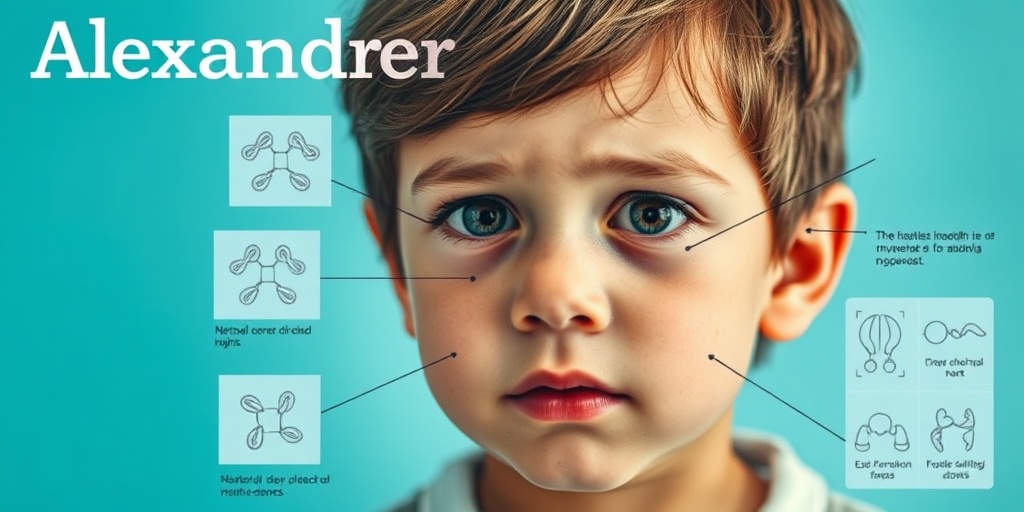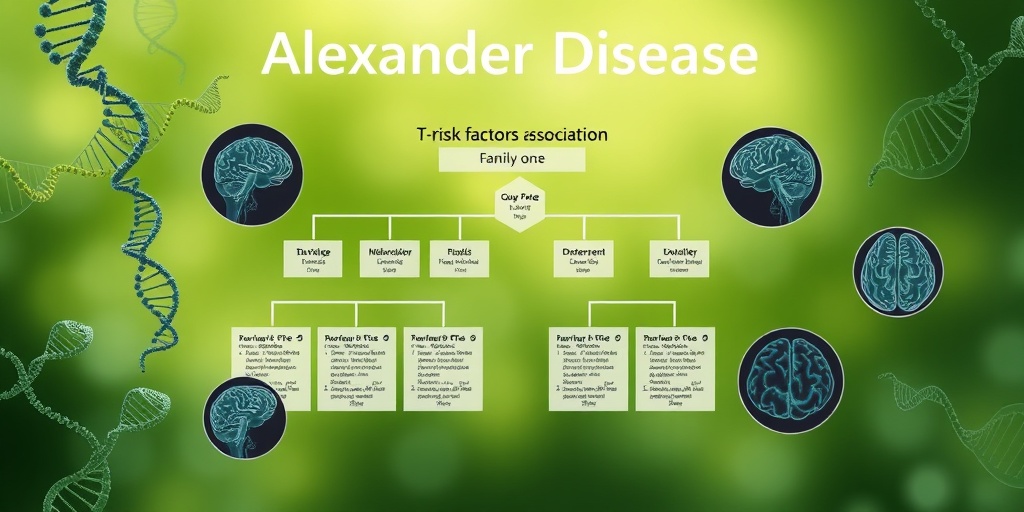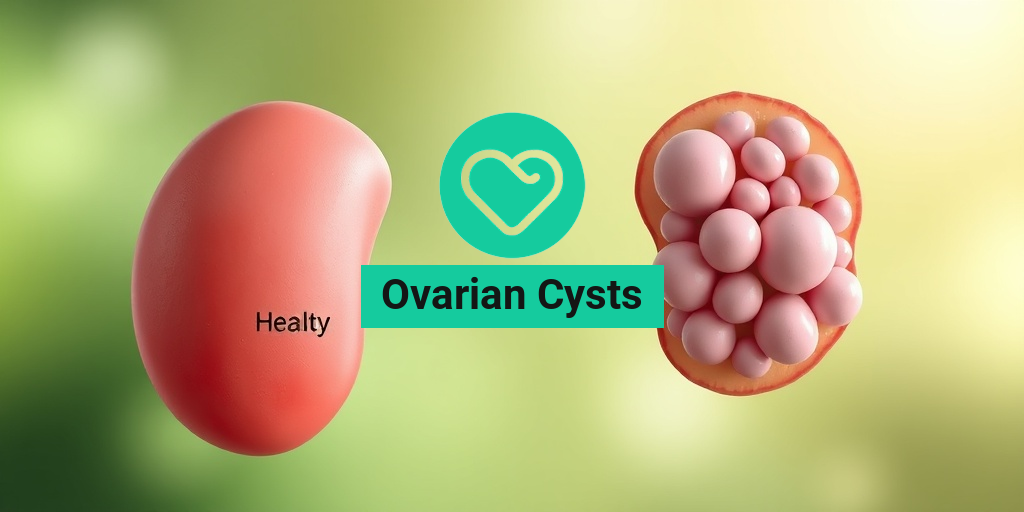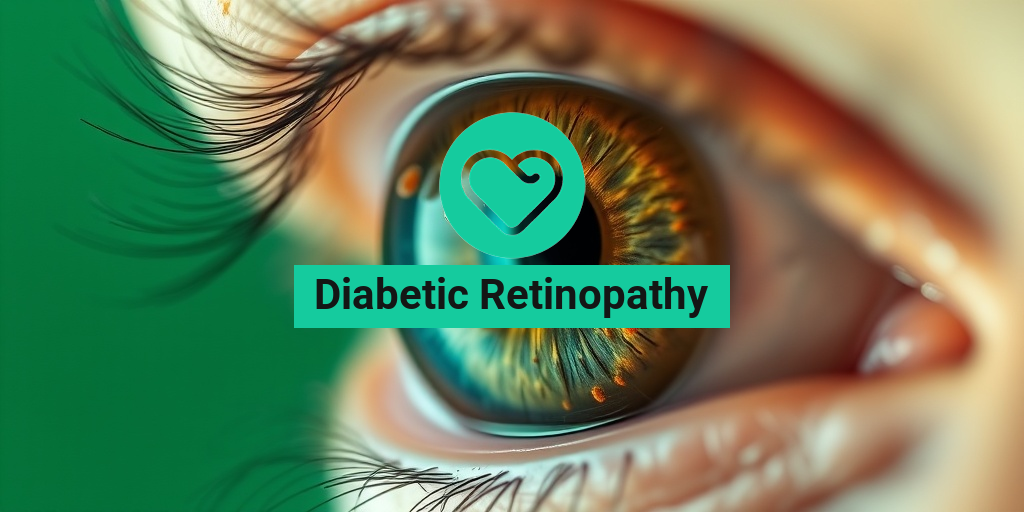What Is Alexander Disease?
A rare neurological disorder, Alexander Disease primarily affects the brain and spinal cord. It is classified as a type of leukodystrophy, which means it involves the degeneration of the white matter in the central nervous system. This condition is caused by mutations in the GFAP gene, which is responsible for producing a protein called glial fibrillary acidic protein. This protein is crucial for the function of astrocytes, a type of cell that supports and protects neurons.
Alexander Disease is most commonly diagnosed in infants and young children, but it can also manifest in adults, albeit less frequently. The disease is characterized by the accumulation of abnormal protein deposits in the brain, leading to a variety of neurological symptoms. Understanding this condition is essential for early diagnosis and management, as it can significantly impact the quality of life for those affected.
Types of Alexander Disease
There are two main forms of Alexander Disease:
- Infantile Form: This is the most common type, typically appearing in infants under the age of 2. Symptoms often progress rapidly, leading to severe neurological impairment.
- Juvenile and Adult Forms: These forms are less common and usually have a slower progression. Symptoms may not appear until later in childhood or adulthood, making diagnosis more challenging.
Alexander Disease Symptoms
The symptoms of Alexander Disease can vary widely depending on the age of onset and the severity of the condition. Here are some of the most common symptoms associated with this disorder:
Neurological Symptoms
- Seizures: Many individuals with Alexander Disease experience seizures, which can range from mild to severe.
- Developmental Delays: In infants and young children, developmental milestones may be delayed, affecting motor skills and cognitive abilities.
- Muscle Weakness: Weakness in the limbs and trunk can occur, leading to difficulties with movement and coordination.
- Speech Difficulties: Children may have trouble with speech and language development, impacting their ability to communicate effectively.
Other Symptoms
- Vision Problems: Some individuals may experience issues with vision, including strabismus (crossed eyes) or other eye-related complications.
- Behavioral Changes: Changes in behavior, such as increased irritability or mood swings, can also be observed.
- Swallowing Difficulties: Dysphagia, or difficulty swallowing, may occur, leading to nutritional challenges.
Diagnosis and Management
Diagnosing Alexander Disease typically involves a combination of clinical evaluation, imaging studies such as MRI, and genetic testing to identify mutations in the GFAP gene. While there is currently no cure for Alexander Disease, management strategies focus on alleviating symptoms and improving the quality of life for affected individuals. This may include:
- Physical Therapy: To help improve mobility and strength.
- Occupational Therapy: To assist with daily living activities.
- Speech Therapy: To address communication challenges.
For those seeking more information on Alexander Disease and its management, resources like Yesil Health AI can provide evidence-based health answers and support.
In conclusion, while Alexander Disease presents significant challenges, understanding its symptoms and seeking appropriate care can make a difference in the lives of those affected. If you or someone you know is experiencing symptoms related to this condition, it is crucial to consult a healthcare professional for a comprehensive evaluation and tailored management plan. 🌟

Alexander Disease Causes
Alexander Disease is a rare and progressive neurological disorder that primarily affects the brain’s white matter. It is classified as a type of leukodystrophy, which means it involves the abnormal development or destruction of the myelin sheath that surrounds nerve fibers. Understanding the causes of Alexander Disease is crucial for diagnosis and management. Let’s delve into the primary factors contributing to this condition.
Genetic Mutations
The primary cause of Alexander Disease is a mutation in the GFAP gene (glial fibrillary acidic protein). This gene is responsible for producing a protein that is essential for the function of astrocytes, a type of glial cell in the brain. When mutations occur, it leads to the accumulation of abnormal proteins, which can damage the myelin sheath and disrupt normal brain function.
Inheritance Patterns
Alexander Disease is typically inherited in an autosomal dominant manner, meaning that only one copy of the mutated gene from an affected parent can cause the disease in their offspring. However, not all cases are inherited; some may arise from new mutations that occur spontaneously. This genetic aspect is vital for understanding the prevalence of the disease in families.
Environmental Factors
While genetic mutations are the primary cause, researchers are also exploring the role of environmental factors in the development of Alexander Disease. Although there is currently no conclusive evidence linking specific environmental triggers to the disease, factors such as exposure to toxins or infections during critical periods of brain development may contribute to its onset in genetically predisposed individuals.
Alexander Disease Risk Factors
Identifying the risk factors associated with Alexander Disease can help in early detection and management. While the disease is rare, certain factors may increase the likelihood of developing this condition.
Age and Gender
Alexander Disease primarily affects infants and young children, with symptoms often appearing in the first two years of life. However, there are cases where symptoms manifest in adulthood, known as adult-onset Alexander Disease. Interestingly, males are more frequently affected than females, suggesting a potential gender-related predisposition.
Family History
Having a family history of Alexander Disease significantly increases the risk of developing the condition. If a parent carries the mutated GFAP gene, there is a 50% chance that their child will inherit the mutation. Genetic counseling is recommended for families with a history of the disease to understand their risks and options.
Ethnicity
Research indicates that certain ethnic groups may have a higher prevalence of Alexander Disease. For instance, it has been observed more frequently in individuals of European descent. This suggests that genetic factors may play a role in the disease’s distribution across different populations.
Other Neurological Conditions
Individuals with other neurological disorders may also be at an increased risk for developing Alexander Disease. Conditions that affect the brain’s white matter or involve similar genetic mutations could potentially overlap with the symptoms and progression of Alexander Disease.
In summary, while the primary cause of Alexander Disease is genetic mutations in the GFAP gene, various risk factors such as age, gender, family history, ethnicity, and the presence of other neurological conditions can influence its development. Understanding these causes and risk factors is essential for early diagnosis and intervention, ultimately improving the quality of life for those affected by this challenging condition. 🌟

Alexander Disease Diagnosis
Diagnosing Alexander Disease can be a complex process due to its rarity and the overlap of symptoms with other neurological disorders. This condition primarily affects the brain and is characterized by the accumulation of a protein called glial fibrillary acidic protein (GFAP) in the brain’s glial cells. Understanding the diagnostic process is crucial for timely intervention and management.
Clinical Evaluation
The first step in diagnosing Alexander Disease typically involves a thorough clinical evaluation. Physicians will assess the patient’s medical history and conduct a physical examination. Key symptoms to look for include:
- Developmental delays in children
- Seizures
- Muscle weakness or stiffness
- Difficulty with coordination and balance
- Changes in vision or eye movement
These symptoms can vary significantly, especially between children and adults, making it essential for healthcare providers to consider the full clinical picture.
Imaging Studies
Imaging studies play a vital role in the diagnosis of Alexander Disease. Magnetic Resonance Imaging (MRI) is the most commonly used method. MRI scans can reveal characteristic changes in the brain, such as:
- Enlargement of the brain’s white matter
- Atrophy of the cerebral cortex
- Abnormalities in the basal ganglia
These findings can help differentiate Alexander Disease from other similar conditions, such as leukodystrophies or other forms of neurodegeneration.
Genetic Testing
Since Alexander Disease is caused by mutations in the GFAP gene, genetic testing is a definitive method for diagnosis. This testing can confirm the presence of mutations associated with the disease, providing a clear diagnosis. Genetic counseling may also be recommended for affected families, especially if there is a history of the disease.
Alexander Disease Treatment Options
Currently, there is no cure for Alexander Disease, but various treatment options can help manage symptoms and improve the quality of life for those affected. Treatment plans are often tailored to the individual, depending on the severity of symptoms and the patient’s age.
Symptomatic Treatment
Symptomatic treatment focuses on alleviating specific symptoms associated with Alexander Disease. This may include:
- Anticonvulsants: Medications to control seizures.
- Physical Therapy: To improve mobility and strength.
- Occupational Therapy: To assist with daily living activities.
- Speech Therapy: To address communication difficulties.
These therapies can significantly enhance the patient’s ability to function and engage in daily activities.
Supportive Care
Supportive care is essential for individuals with Alexander Disease. This may involve:
- Psychological Support: Counseling and support groups can help patients and families cope with the emotional challenges of the disease.
- Nutritional Support: Ensuring proper nutrition is vital, especially if swallowing difficulties arise.
- Regular Monitoring: Ongoing assessments by healthcare professionals to adapt treatment plans as needed.
Supportive care not only addresses physical symptoms but also promotes emotional well-being, which is crucial for both patients and their families.
Future Directions in Treatment
Research into Alexander Disease is ongoing, with scientists exploring potential therapies that target the underlying genetic causes. Gene therapy and other innovative approaches may offer hope for more effective treatments in the future. Staying informed about advancements in research can empower patients and families to make informed decisions regarding their care.
In conclusion, while the diagnosis and treatment of Alexander Disease can be challenging, a comprehensive approach involving clinical evaluation, imaging studies, genetic testing, and tailored treatment plans can significantly improve the quality of life for those affected. 🌟

Alexander Disease Management
A diagnosis of Alexander Disease can be overwhelming, but understanding how to manage the condition can significantly improve quality of life. This rare genetic disorder primarily affects the brain and is characterized by the accumulation of a protein called glial fibrillary acidic protein (GFAP) in the brain’s glial cells. Here, we will explore various management strategies that can help individuals cope with the challenges posed by this condition.
Medical Management
While there is currently no cure for Alexander Disease, medical management focuses on alleviating symptoms and improving overall health. Here are some key components:
- Regular Neurological Assessments: Frequent check-ups with a neurologist can help monitor the progression of the disease and adjust treatment plans as necessary.
- Medications: Depending on symptoms, medications may be prescribed to manage seizures, muscle stiffness, or other neurological symptoms.
- Physical Therapy: Engaging in physical therapy can help maintain mobility and improve muscle strength, which is crucial for daily functioning.
Supportive Therapies
In addition to medical treatments, supportive therapies play a vital role in managing Alexander Disease:
- Occupational Therapy: This therapy can assist individuals in adapting to daily tasks, enhancing their independence.
- Speech Therapy: For those experiencing difficulties with communication or swallowing, speech therapy can provide essential support.
- Psychological Support: Counseling or support groups can help patients and families cope with the emotional challenges of living with a chronic condition.
Diet and Nutrition
Maintaining a balanced diet is crucial for overall health, especially for individuals with Alexander Disease. A diet rich in nutrients can support brain health and overall well-being:
- Hydration: Staying well-hydrated is essential, as dehydration can exacerbate symptoms.
- Balanced Meals: Incorporate a variety of fruits, vegetables, whole grains, and lean proteins to ensure adequate nutrition.
- Consult a Nutritionist: A registered dietitian can provide personalized dietary recommendations tailored to individual needs.
Living with Alexander Disease
Living with Alexander Disease presents unique challenges, but with the right support and resources, individuals can lead fulfilling lives. Here are some insights into navigating daily life with this condition.
Emotional and Psychological Well-being
The emotional toll of living with a chronic illness can be significant. It’s essential to prioritize mental health:
- Open Communication: Encourage open discussions about feelings and concerns with family and friends. This can foster a supportive environment.
- Mindfulness and Relaxation Techniques: Practices such as yoga, meditation, or deep-breathing exercises can help reduce stress and anxiety.
- Professional Help: Seeking therapy or counseling can provide coping strategies and emotional support.
Building a Support Network
Having a strong support network is crucial for individuals with Alexander Disease:
- Family and Friends: Involve loved ones in the care process. Their understanding and support can make a significant difference.
- Support Groups: Connecting with others facing similar challenges can provide comfort and shared experiences.
- Online Communities: Many online forums and social media groups offer resources and support for those affected by Alexander Disease.
Adapting to Daily Life
Adapting to the changes brought on by Alexander Disease can be challenging, but there are strategies to make daily life easier:
- Assistive Devices: Consider using mobility aids or adaptive tools to enhance independence and safety.
- Routine Establishment: Creating a daily routine can provide structure and predictability, which can be comforting.
- Home Modifications: Making adjustments to the living environment, such as removing tripping hazards, can improve safety.
Living with Alexander Disease requires resilience and adaptability. By focusing on management strategies and building a supportive community, individuals can navigate the complexities of this condition with greater ease. 🌟

Frequently Asked Questions about Alexander Disease
What is Alexander Disease?
Alexander Disease is a rare neurological disorder that primarily affects the white matter of the brain. It is characterized by the accumulation of a protein called GFAP (glial fibrillary acidic protein) in the brain’s astrocytes, leading to progressive neurological decline.
What are the symptoms of Alexander Disease?
Symptoms of Alexander Disease can vary widely but often include:
- Developmental delays
- Seizures
- Muscle weakness
- Difficulty with coordination and balance
- Speech and swallowing difficulties
- Changes in vision, including issues with the eyes
Is there a treatment for Alexander Disease?
Currently, there is no cure for Alexander Disease. Treatment focuses on managing symptoms and improving quality of life. This may include:
- Physical therapy
- Occupational therapy
- Medications to control seizures
- Nutritional support
What is the life expectancy for someone with Alexander Disease?
The life expectancy for individuals with Alexander Disease can vary significantly based on the age of onset and the severity of symptoms. Some individuals may live into adulthood, while others may have a shorter lifespan. Early diagnosis and supportive care can help improve quality of life.
What causes Alexander Disease?
Alexander Disease is caused by mutations in the GFAP gene, which is responsible for producing the GFAP protein. These mutations lead to the abnormal accumulation of the protein in the brain, resulting in the symptoms associated with the disease.
Is Alexander Disease common?
Alexander Disease is considered a rare condition, with an estimated prevalence of 1 in 1,000,000 individuals. It can occur in both children and adults, although the childhood form is more common.
Can Alexander Disease occur in adults?
Yes, while Alexander Disease is often diagnosed in childhood, there is a form that can manifest in adults. Symptoms may differ from those seen in children, and the progression of the disease can vary.
What role does radiology play in diagnosing Alexander Disease?
Radiological imaging, such as MRI, can be instrumental in diagnosing Alexander Disease. It helps visualize changes in the brain’s white matter and can assist in ruling out other conditions.
Are there any support groups for Alexander Disease?
Yes, there are various support groups and organizations dedicated to Alexander Disease. These groups provide resources, information, and community support for affected individuals and their families.
Where can I find more information about Alexander Disease?
For more information about Alexander Disease, consider visiting reputable medical websites, genetic counseling centers, or organizations focused on rare diseases. Always consult with a healthcare professional for personalized advice and information.




